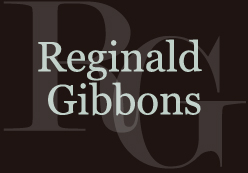Our quarter is only 10 weeks long. Here’s a list of the assignments (but not in sequence–I’ll post that later). Each poem is written to specific prompts (these too, I’ll post later) as we go week by week. And as I mentioned in my last post, the only textbook I use is a little anthology that I’ve created myself, over the last five years. (That’s coming, too.) It’s a requirement of teachers of this course (of which there are a number of sections taught by different faculty) that students must come out of it able to read poetry written from the Renaissance/Early Modern period to the present, and that means being able to hear the rhythms and scan the meter of iambic pentameter. We instructors all use modern and contemporary poems, too, and in those cases, must teach students how to pick up nuances of typography, movement, structure, torqued and broken syntax, diction, etc. etc.
~ ~ ~ ~ ~
• You have only one textbook: our anthology. It’s your sourcebook, your reference collection, your portable gallery of poems. It’s certainly not comprehensive, but it does exemplify a great variety of poetic techniques and kinds of poems. Your favorite poems will tell you that they would welcome your conversation with them—in the form of your own poem.
• You’ll compose 7 new poems (based on prompts), and you’ll revise 2 of them during the quarter (including a sonnet); then for your final portfolio you’ll revise 4 of them (which may mean that you again revise in a substantial way the two poems you have already revised during the quarter). Take the writing of poems seriously and do not compose parodies, mock-versions, jokes, etc.
• You’ll learn how to read and to write iambic pentameter and to recognize the technical aspects of a few major poetic structures—several stanza forms and in particular the sonnet.
• You’ll write 3 annotations—in each, describing one element of poetic technique. It’s extremely important that you grasp the nature of this exercise. Detailed instructions are below.
• You’ll “workshop” each other’s poems (one poem per person, this quarter) in class.
• You’ll write 4 brief word studies.
• You’ll memorize and recite (in class or privately) 20 lines (or more, if you wish) of your own choice from our anthology (no other poems permitted)
• You’ll take a few brief quizzes on poetic technique.
• You’ll participate in an in-class reading at the end of the quarter: reading aloud one of your own poems written and revised during this quarter (no longer than 20 lines) and you’ll answer the question of what you want to write next (in any genre).
• For extra credit, you may turn in (and post to Discussions on Canvas) one or more responses to poetry readings that you attend during the quarter. There are many in Chicago, presented by the Poetry Foundation (poetryfoundation.org/programs/events), the Guild Literary Complex (guildcomplex.org), and many other organizations at various venues in the city. In such a response (400 words), you will describe the poet’s way of reading (i.e. the performance), the kinds of poems read (i.e. the subject matter and the style), and your own response to poet, poems and performance—and add other observations, and ask questions.
• For your end-of-quarter portfolio you will (substantially) revise (again, if you have already revised a poem during the quarter and turned it in to me) 4 of your poems (you must revise your sonnet again) and write a double annotation (1000-1500 words, counting quoted passages from poems; you must double-space this). The double annotation must focus on either two elements of poetic craft/technique in one poem (or part of a poem), OR one craft element in two poems (or parts of two poems). The first option is simply more extensive and detailed than a single annotation (see the next paragraph, below); the second option is a comparison and contrasting of two poems regarding how they use the same element of poetic craft/technique.

